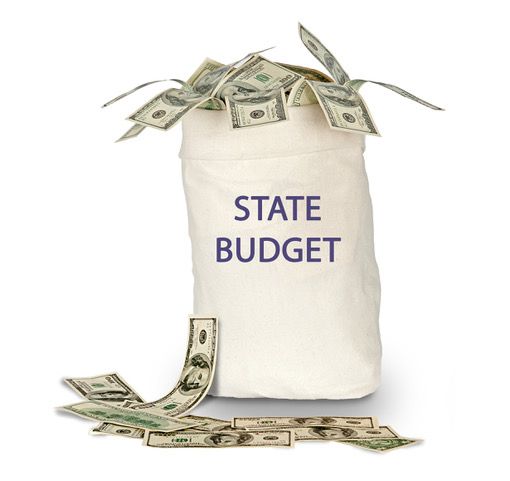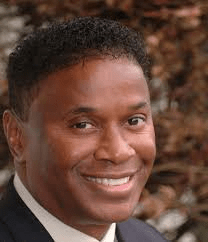
Depending on where they stand, a number of political leaders in California either praised or pushed back on Gov. Gavin Newsom’s $ 267.8 billion budget proposal for fiscal year 2021-22. The plan includes a broad range of high-dollar investments intended to help the state’s struggling economy recover from the COVID-19 pandemic.
On Friday, the governor announced his mid-year budget, which Sacramento insider’s call the “May Revise.” It is an enhanced and more detailed version of the smaller $227 billion spending plan Newsom sent to lawmakers for approval in January.
Under California law, the Legislature has until June 15 to negotiate and approve the budget before it takes effect July 1.
“While we are still at the tail end of getting out of this Pandemic, our budget reflects how we will move past it into a more prosperous future,” said Assemblymember Kevin McCarty (D-Sacramento), who is secretary of the California Legislative Black Caucus.
“I am pleased to see that the budget proposal includes, $11 billion to enhance our transportation system including funding for transit and rail projects, active transportation, and zero emission public transit options; an additional $4.7 billion to address homelessness, and direct cash assistance and tax credits to middle and low-income families and small businesses to ensure California’s recovery is everyone’s recovery,” continued McCarty.
With an expected $75 billion surplus from California taxpayer revenue – and an additional $27 billion in a recovery cash infusion from the federal government — the governor revealed an ambitious plan that includes historic investments in early childhood education, vocational education, wildfire prevention, infrastructure, clean cars and more.
“This is a historic, transformational budget,” Newsom announced. “This is not a budget to play small ball.”
The budget plan includes a whopping $14.5 billion budget for education, including a statewide universal pre-k class added to the California public school system for 4-year-olds, smaller class sizes and college savings accounts for low-income children. There is also $2 billion to help Californians affected by the pandemic catch up on unpaid utility bills; $11 billion for transportation infrastructure; and $7 billion to expand broadband access to Californians in places that are underserved.
“Internet access is a social justice issue,” Assemblymember Mike Gipson (D-Carson) tweeted, responding to Newsom’s plan to invest in narrowing the gaping digital divide that runs along class and racial lines.
Newsom says his plan will help California recover and put the country’s largest state economy on a path to sustained prosperity in the short term.
“This is our plan to get California not only back on its feet, but California roaring back, once again, to its rightful status as the most essential and dominant state, not only in the United States, but one of the most essential modern economies anywhere in the world,” Newsom added.
A number of Republican elected officials, including Sen. Patricia Bates (R-Laguna Niguel), responded to the governor’s budget, saying it “falls woefully short.”
“For example, the Governor and the Legislature could fully fund the projects outlined in Senator Steve Glazer’s $15 billion school bond proposal. This would build schools and colleges while avoiding more than $5 billion of interest charges and an expensive bond campaign. Wall Street and political consultants may not like it, but it would be good for California’s kids and for the state’s fiscal stability,” she said.
Assembly Minority Leader Marie Waldron, R-Escondido said Newsom’s proposal, “Does nothing to lower the cost of living for hard-working Californians.”
“This budget will do some temporary good, but it fails to seriously address any of the long-term structural problems facing the state,” she said.
Across the aisle, Sen. Sydney Kamlager (D-Los Angeles), the only African American woman in the California Senate, took to Twitter to highlight some of the highlights of the governor’s budget she called her “top takeaways.” They include: $300 million for public hospitals; investments in the art; and $12 billion to address homelessness.
The plan also funds a number of Green initiatives. Among them are a $3.2 billion investment in clean transportation, and another $400 million over three years for a clean car vehicle rebate program for individuals.
“We’re heartened by much of what Gov. Newsom has proposed,” said Greenlining Institute President and CEO Debra Gore-Mann. The Oakland-based Greenlining Institute is an environmental public policy and research organization.
“Now it’s up to the legislature to build on this foundation, using both the budget and pending legislation to build a truly just economy in California,” said Gore-Mann. “The budget affects all of us, so we urge everyone to contact their legislators and push them to seize this opportunity to pass a just, equitable budget.”
Rusty Hicks, chair of the California Democratic Party, threw his support behind the governor.
“As Democrats work to create equitable solutions that meet the moment, the California Democratic Party commends Governor Newsom for centering our recovery around those who need it the most,” he said.
Betty Yee, California State Controller, praised the governor’s budget for prioritizing communities hit hardest by COVID.
Today, Governor Gavin Newsom’s announcement of California’s economic recovery plan demonstrates how Democratic leaders across the state are working to ensure every person builds back stronger,” she said.






